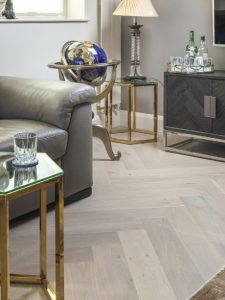Lamination is a process that can offer great benefits. These include improving the aesthetics and providing protection for materials that are sensitive to moisture and contaminants. A laminate can really enhance a product, whether it is flooring, packaging, marketing materials, or even furnishings. Ours is a team that has specialised in laminating services for many years. So, whatever it is you need, we’ll have the tools to get it done.
Temperatures are able to fluctuate within homes and businesses. It can happen because of the weather outside, what you find comfortable, and the activities taking place. Something you might not be aware of though is that when the temperature shifts, it can have an impact on your floor covers. This is especially the case if you have laminate flooring. We’re going to discuss how humidity and temperature can affect these floors, so read on to expand your knowledge.
Expanding or shrinking laminate
 Firstly, humidity can result in laminate expanding. Although there is a protective film cover, the core of the flooring will be wood. The interlocking parts may also not have any protection. Humidity in your property can result in the wood expanding. This causes a crowned look in your laminate floors.
Firstly, humidity can result in laminate expanding. Although there is a protective film cover, the core of the flooring will be wood. The interlocking parts may also not have any protection. Humidity in your property can result in the wood expanding. This causes a crowned look in your laminate floors.
Even though humidity expands the wood in laminate flooring, dryness and cold temperatures can lead to the opposite outcome. They cause shrinking, ultimately resulting in cracks. It can mean you need to repair or replace the flooring.
Moisture damage
Cold temperatures can also cause water damage. High quality laminating services give the flooring a strong, durable moisture and wear barrier. However, if you have a property that’s too cold, particularly in winter, there can be a lot of moisture in the air. As a result, there is a risk of damaging the laminate. If you often come and go in the winter, you’ll also probably bring in ice, snow, and cold temperatures. When there’s sufficient exposure, your laminate can experience water damage.
Luckily, it can be really easy to stop the problem here. By using rugs close to doorways in the winter, you can safeguard your property. Just make sure you monitor them and ensure they don’t let water get through to the flooring. In addition, make sure you try to keep the internal temperatures consistent to limit the amount of moisture in the air.
Regular temperature shifts are harmful
As we’ve said here, temperature fluctuations can prove harmful. If you regularly have changing temperatures in your property, they can damage your laminate floors without you knowing. The repeat cycles of expansion and contraction can end up seriously damaging your flooring. Specific effects include curling and peeling. However, again it’s possible to manage this by ensuring you preserve a constant temperature in your building.
Conclusion
Both humidity and temperatures can have damaging effects on laminate floors. Yet, it’s usually nothing you can’t avoid if you take preventative methods to keep the floor in prime condition. Also, you could ensure you have your laminate floor in the right areas, avoiding places where moisture, heat, cold, or fluctuating conditions could be a problem. What’s more, you can choose products with a more reliable moisture barrier.
We know what to do to ensure quality laminating services
At Foiling Services, we achieve very high standards for all projects. Our wealth of knowledge, including the risks and potential pitfalls, means we can apply foils and laminate effectively. More importantly, we can ensure you select the right products for your applications, including durable films with high moisture resistance.
We’ll deliver high quality results every time with our laminating services. So if you’re interested, let us know.
